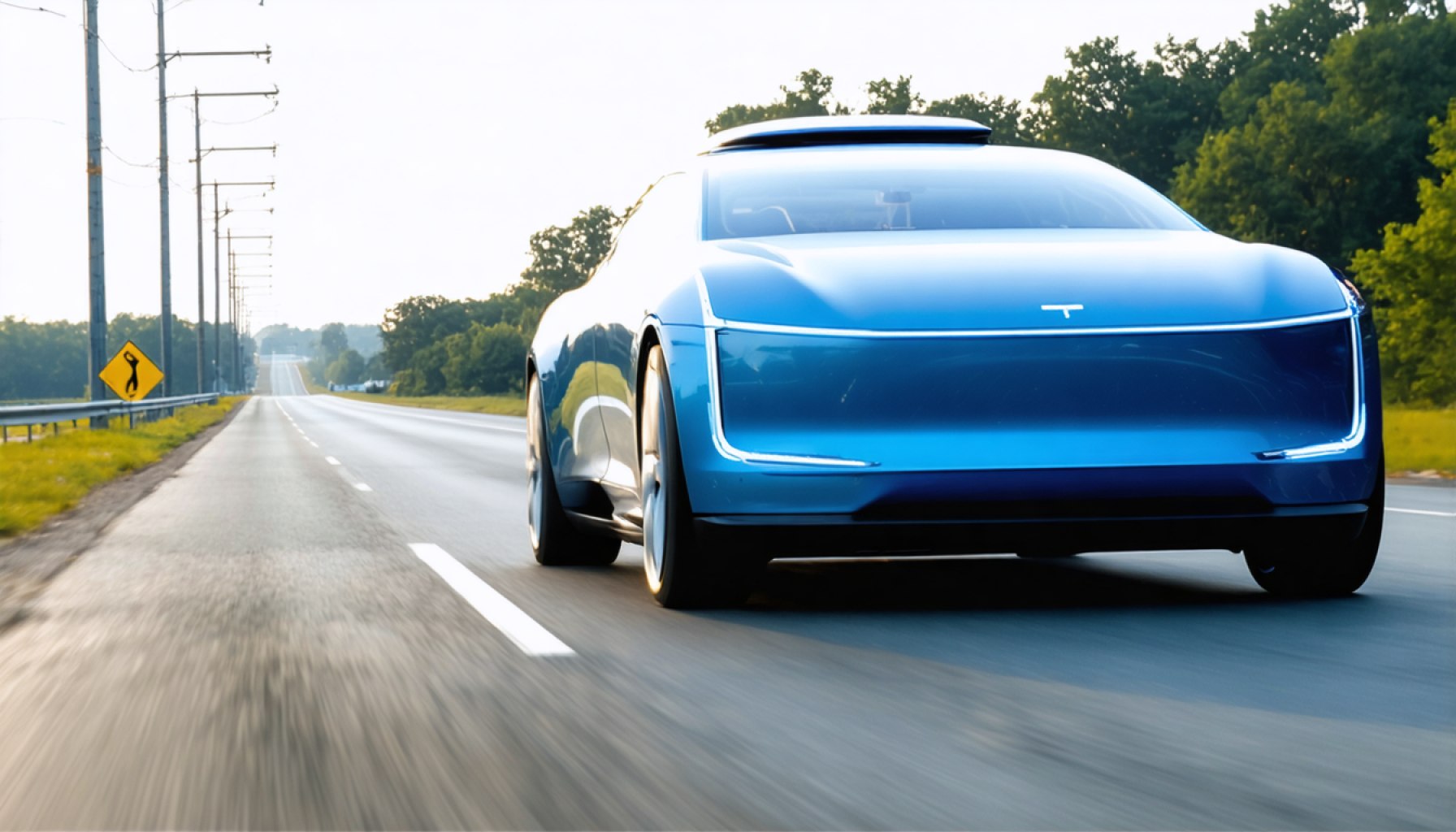- Delaware is actively integrating autonomous vehicles, prioritizing safety in this technological evolution.
- Former Governor John Carney’s initiative sparked the creation of an Advisory Council to guide the process.
- Senate Bill 46 requires a human safety operator in autonomous trucks to balance innovation with caution.
- Delaware’s unique terrain offers a distinct challenge for autonomous vehicle implementation compared to other states.
- In agriculture, GPS-guided tractors exemplify technological advancements, highlighting potential risks of malfunctions.
- The state’s approach centers on safety, adaptability, and learning from past tech missteps.
- The central theme emphasizes responsibility and care in adopting autonomous vehicle technology.
Dotted along the rolling hills and sprawling farmland of Delaware lies the new frontier of transportation: autonomous vehicles. As this cutting-edge technology edges closer to becoming a staple of the American roadway, leaders in the First State are working tirelessly to ensure its rise doesn’t jeopardize safety—a critical concern in this grand experiment of the 21st century.
Since the former Governor John Carney’s 2017 initiative, Delaware has been a part of the fierce battle between innovation and caution, determined not to be left behind. An Advisory Council was formed, charged with crafting blueprints for integrating autonomous vehicles into the state’s fabric. The vision: a seamless blend of innovation with a vigilant watch on safety as driverless cars cruise down highways.
But for every leap in technology, there are fears and hesitations. Senator Spiros Mantzavinos is among the chorus of voices emphasizing caution. Through Senate Bill 46, he argues for a mandatory human safety operator physically present inside autonomous tractor trailers before they’re allowed free rein on Delaware’s roads. This bill, viewed as a lifeline, aims to mitigate potential accidents while maintaining momentum towards progress.
With tales of autonomous trucks already traversing routes between Dallas and Houston, and taxis plying the streets of Washington, D.C., Delaware must chart its own course. The state’s highways, unlike the broad expanses of Texas or the urban weave of D.C., pose their unique test bed for these technological titans.
Meanwhile, the hum of innovation is alive and well in Delaware’s agricultural heart. Fields thrive under the guidance of self-steering tractors, their GPS-guided precision transforming traditional farming. Yet, seasoned farmers like Bill Powers remind us that with great technology comes the inherent risk of malfunction—a sobering note amidst the enthusiastic drive for efficiency.
This cautious optimism reflects the broader sentiment in Delaware. Safety, adaptability, and readiness form the crux of the state’s approach; the compelling narrative of progress balanced with recollection of past tech missteps. As legislators, technologists, and farmers stand at the cusp of this seismic change, the central theme remains clear: the journey to autonomous vehicles must be paved with responsibility and care.
As Delaware straddles the line between innovation and prudence, the lesson is unmistakable: the future doesn’t just belong to those who create—it belongs to those who do so wisely. The stakes are high, but the reward of transforming the roads of yesterday into the pathways of tomorrow remains a tantalizing prize.
The Autonomous Vehicle Revolution in Delaware: What You Need to Know
Overview of Autonomous Vehicles in Delaware: Balancing Innovation and Safety
Delaware is at the forefront of the autonomous vehicle revolution, embodying a meticulous blend of innovation and caution. Since former Governor John Carney’s 2017 initiative, efforts have been ongoing to integrate autonomous vehicles into the state’s transportation network. The objective? Achieve modernity without compromising safety.
Insights and Predictions for Autonomous Technology
1. Autonomous Vehicle Market Trends: According to Allied Market Research, the global autonomous vehicle market was valued at approximately $54 billion in 2019 and is projected to reach $557 billion by 2026. This rapid growth highlights the increasing importance of such technology for Delaware.
2. Safety and Regulation: A study by Rand Corporation emphasizes the necessity of regulation to ensure safety standards are met while fostering innovation. Delaware’s Senate Bill 46, requiring human operators in autonomous tractor trailers, is an apt reflection of this balance.
3. Real-World Use in Agriculture: Delaware’s agricultural sector benefits from autonomous tractors, proving the viability of autonomous technology beyond transportation. Their GPS-guided systems enhance efficiency and precision in farming operations.
Limitations and Controversies
– Safety Concerns: Autonomous vehicles are not foolproof. Incidents of malfunction have brought about serious discussions on accountability and safety, as noted by various journals such as the Journal of Transportation Safety & Security.
– Public Perception and Trust: A survey by the American Automobile Association (AAA) shows that a significant segment of the public remains skeptical about sharing the road with autonomous vehicles.
Pros and Cons Overview
– Pros:
– Improved efficiency and reduced human error on roads and in agriculture.
– Potential reduction in traffic congestion and emissions.
– Cons:
– High initial investment and infrastructure modifications required.
– Technological malfunctions and cybersecurity risks.
Practical Recommendations for Delaware Drivers
1. Stay Informed: Regularly check updates from the Delaware Department of Transportation on autonomous vehicle policies and developments.
2. Advocate for Education: Support local initiatives that emphasize public education on the functionalities and limitations of autonomous vehicles.
3. Embrace Innovations: For those in agriculture, consider adopting autonomous technology to boost productivity.
Contingency Planning for Autonomous Vehicles
Implement thoroughly vetted emergency response plans for autonomous vehicle incidents, ensuring swift and informed reactions.
Conclusion: With Delaware leading as a case study, the embrace of autonomous vehicles should be cautious yet progressive. By focusing on education, safety, and regulatory compliance, Delaware strives to transform challenges into opportunities in the transportation landscape.
For more detailed information on the technological advancements or legislative updates concerning autonomous vehicles, visit the official State of Delaware website.
